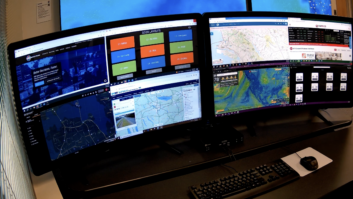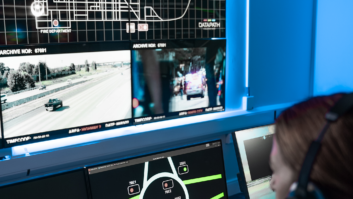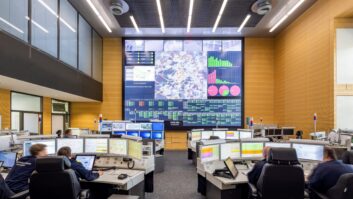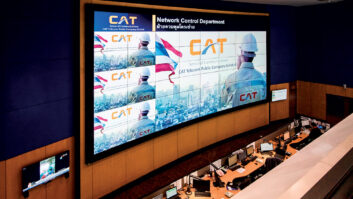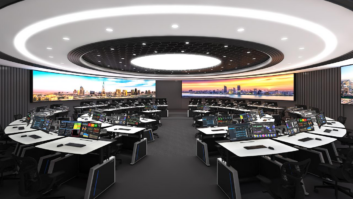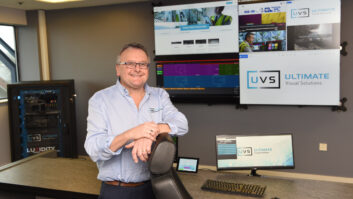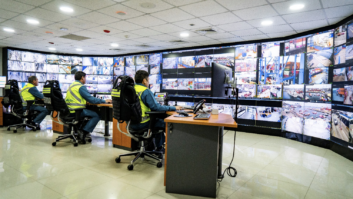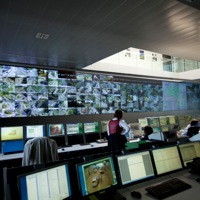
Today, the internet is about connecting people. Whether it’s corporate email or Facebook, Twitter or business videoconferencing, it enables communication between one person and another. But there is a growing school of thought that says the internet is transmuting. ‘People applications’ won’t go away – but by the year 2020, believe some analysts, there will be over 100 billion devices connected to the internet. That’s not phones, tablets, PCs and smart TVs – it’s industrial machines, domestic white goods (it’s predicted that a new home in 10 years’ time could have 100 or more internet-connected sensors) and so on. Anything that has performance characteristics that can be measured and controlled will be online. This strange new world, where no man has gone before, is being called ‘The Industrial Internet’ or ‘The Internet of Things’. And all those ‘things’ will be talking to each other via IP. Pocket of resistanceThere’s little doubt that IP has become increasingly influential in the pro-AV world – but if there has been a pocket of resistance, it’s been in control rooms. That’s perhaps no surprise: control room applications are almost invariably mission critical. They require reliable, predictable performance. Both those attributes give rise to a certain conservatism in the control room industry, favouring proven technologies and architectures. The question is: will control rooms succumb to IP as the rest of the world is doing?
“In control room installations, we usually have a mixture of all kind of signals coming from different sources, such as cameras, application servers and other devices,” notes Eric Hénique, director of marketing and international sales at eyevis. “Not all of these sources come as IP streams to the control rooms. In new installations especially, the camera signals coming into the control rooms are IP video streams. For other signals it depends whether they have to be present at different locations – a second control room, a boardroom and so on. If so, these digital signals can be transferred into IP streams and are then put on the network as IP streams, for example with a device like our eStreamer.“IP will definitely become a standard for camera signals in future, but not necessarily for all signals in control rooms,” he goes on. “Generally speaking, about 80% of the signals we have to deal with in control room installations today are IP signals, and this number will grow in future.”
“When talking about IP in video processing systems for command and control, there are two distinct classes,” says Iddo Hadany, group manager for engineering projects at Mitsubishi Electric. “The first is a regular standard system that imports IP visual information; the other one is a system which is completely based on IP communication. This second group is sub-divided into closed systems, which use proprietary network and streaming formats, and open systems, which use standard network and common streaming formats.” Increase in demand“I would say that IP architecture is not yet standard in the design of video processing systems for command and control,” he continues. “However, in the past four years, demand for importing IP sources such as IP cameras has increased dramatically. Over the past couple of years, we’ve also experienced increasing demands for streaming sources of other types, such as computer desktops/applications and other types of visual information and data streams. Needs are clearly changing, so versatility is an important factor in system design – which is one of the reasons why Mitsubishi Electric based its Seventy Series display wall range around modular building blocks that can adapt as needs change.”
Fredrik Sjostedt, vice president, global product management and marketing, control rooms & simulation at Barco, isn’t seeing quite the same level of IP incursion. “The industry is still in transition, and in our experience, only around 30% of incoming signals are IP-based and need to be converted,” he says. “That said, there are very clear differences between markets, and we see emergency operations centres leading the conversion.”
One area where IP has certainly made good ground in control centres is in KVM (keyboard, video and mouse) solutions – because, according to John Halksworth, product manager at Adder Technology, the technology has made significant strides. keen on kvm“Keyboard, video and mouse applications demand an ‘at the computer’ experience with very low latency, accurate video and operation,” he notes. “There is a misconception in the market that using IP means you must suffer compressed video artefacts, unresponsive updates or jerky mouse movements. This is undoubtedly due to the experience of older-style remote control and ‘KVM-over-IP’ technologies that exhibited some of these drawbacks.“However, modern IP technologies using dedicated Gigabit networks deliver the same, often better, user experience as custom video matrix solutions, while having the advantage of much greater flexibility. The ubiquity and flexibility of IP solutions means they will eventually become the standard – it’s just a matter of proving the advantages and capabilities of KVM over IP to the customer.”
Seeing things similarly is Jed Deame, vice president of marketing at RGB Spectrum. “IP is quickly becoming the standard for KVM control in control rooms,” he says. “It is also gaining ground for video applications in certain cases where image quality and/or frame rate is not important. It will be many years before IP will displace baseband DVI/HDMI for video since its bandwidth is still an order of magnitude less. Once 10G networks and 100G switches become commonplace, IP will begin to displace baseband. In the meantime, it is tough to compete in terms of bandwidth.”
Hadany also sees bandwidth as an issue that is slowing the march of IP into control rooms. “The update speed isn’t enough for the standard ‘real time’ of 24 frames per second – let alone the 60 frames per second that is preferred,” he says.
IP bandwidth, then, remains an obstacle. It is also perceived not to be able to offer a sufficiently high level of image quality. And then there’s latency – an obstacle to the instantaneous responsiveness on which many control rooms depend.
“In our Mura videowall controller, processing – rescaling, compositing, switching and so on – is done locally on the card itself,” explains Rob Moodey, UK sales account manager at Matrox. “This will always be faster than attempting to move changed streams through the network. With Mura, dragging a window or switching a layout, for example, is instant – clearly contrasting with a latency dependent on the network in some other systems.”
“Another important point is that if it is ‘your’ exclusive network, you can assign the bandwidth in the way you want, but if you are sharing it – a service provider’s network or even your own organisation’s private but multipurpose network – then you may be in contention for bandwidth with unknown other services,” he continues. “Murphy’s Law has a way of reminding you of this by degrading video quality at the most inconvenient time. A multipurpose network is clearly easiest, because it’s probably already in place. A single-purpose network is obviously better, but will come with the associated network architecture overhead costs.” IP: pros and consDeame can see a whole host of reasons why it will take IP some time to prevail.“Although IP systems using commodity network switches can bring significant cost savings, particularly in larger systems, it does come at a price,” he says. “IP systems require computers and operating systems to be involved in the transmission of video whereas baseband systems do not. HDCP encryption is well established in baseband, but not so in IP – so baseband wins on security. In terms of reliability and fault tolerance, there’s no standout, since the benefits gained by the distributed nature of IP systems is lost by the ‘CPU in the loop’ factor. Baseband wins hands down on simple installation and integration with other systems. The DVI/HDMI standards are fully interoperable at the connector level, and network engineers are not required to connect systems together. There are no IP addresses to set; it is plug and play. Inline monitoring is as simple as connecting a display. IP systems have a long way to go here.”But: ‘prevail’ it probably will. Hénique has a positive view of the advantages that, potentially, IP can bring to control rooms. “IP-based systems are much more flexible in terms of integration, scalability, upgradability, and so on,” he believes. “In the past, the integration of new camera systems required an upgrade of the hardware in the control room, for example with a larger controller with more video inputs. This is much more easily realised with an IP-based system. Redundancy can easily be achieved with a second network, for example. In terms of costs, the initial installation for the customer is not necessarily a lot cheaper, because the network infrastructure has to be installed to be able to handle the network load and the security issues in such networks. On the other hand, if you look at the hardware we provide, the system will become cheaper, because the number of input cards on the controllers can be reduced, installation works become cheaper, and upgrades are easier and less expensive.”
Hadany is similarly enthusiastic – but realistic. “In terms of data security, control rooms can benefit from the enterprise security already implanted in the network – although, of course, it’s no longer ‘source-cable-display’, so there is somewhat more vulnerability. It’s easy – but perhaps not cheap – to build in the necessary resilience. Laying the cabling is straightforward, but configuring software can be a major challenge. Scalability and upgradability are inherently easy with IP. In some ways, costs will be lower – for off-the-shelf hardware, for example; however, IP software is expensive, and there are licence issues to be considered.”
For Hadany, the big downsides to IP in control rooms are that integration will not be easier – “there are so many stream formats claiming to be the leading format, that supporting and integrating them into the system is a perpetual challenge for the system manufacturer/designer”, he says – and performance: “The IP of today can’t match up with traditional standard processors and cabled systems.” New capabilitiesIP can also bring important new capabilities that weren’t straightforward before, such as intelligent video analysis, real-time event triggers, improved SCADA integration and so on.
“It’s true: IP brings new capabilities that in future could allow a single command and control ecosystem,” says Adder’s Halksworth. “The ability to record, capture or analyse video are all commonly recurring themes among our customers, as are various requirements for event triggers. At Adder, we are continually striving for greater integration to make the single command and control system a reality; we even publish an API to allow third parties to create a compatible systems infrastructure.”
“Yes, those things are all possible,” says Hadany. “Once the information is in the network, all the tools already being used with the ‘regular’ data become relevant for the visualisation aspect. This, I believe, will be the real added value that will trigger a change from today’s standard systems to IP-based ones.”
“We could do those things with non-IP signals in the past,” says Hénique, “but IP makes things simpler and more flexible, because everything can be done on the software side without special hardware in between.”
So where does all this leave us? Matrox’s Moodey perhaps represents the view of manufacturers. “I believe we are still at a phase where designers are developing their ideas about the best way to use IP in video processing for the command/control environment,” he says. “As manufacturers, we have to keep enhancing their experience – adding new possibilities for them to raise the bar, lower the cost and enhance the systems they design.”
Many in the industry also note the challenge to installers and integrators – although those are little different from the challenges they have faced, and overcome, as the network becomes central to applications like digital signage and videoconferencing.
“We’re in a transition here,” says Sjostedt, “and the industry needs to understand what’s going on and to be trained on these new capabilities and how to make them work.”
Many would agree: in terms of moving from technologies that have stood them in good stead for many years towards technologies that unquestionably represent the future, control rooms are in transition. Much still needs to be done to resolve IP performance and predictability issues – and there are also issues relating to IP standards that may hamper progress, although organisations such as ONVIF are in place to address these. But when it comes to IP and control rooms, it seems likely that the Borg – itself a collective linked by a sophisticated subspace network – had it about right: “Resistance is futile”. www.adder.comwww.barco.comwww.displays.mitsubishielectric.euwww.eyevis.dewww.matrox.comwww.rgb.com
